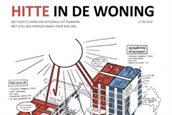Heat in the Home fact sheets
As a result of climate change, the Netherlands is facing increasingly frequent periods of heat. Extreme heat, involving temperatures of more than 35°C, is also occurring more frequently. Many Dutch houses are not designed to cope with such heat. Many existing houses become too hot in summer. In many situations, the heat standard, which currently only applies to new construction projects, is exceeded. The fact sheets relating to the RAAK project “Heat in the Home” outline, per type of house, the most effective solutions for combating heat issues in existing houses.
For whom?
The fact sheets are intended for provinces, municipalities, housing corporations, homeowners' associations (VVEs) and community health services (GGDs). For each party, the fact sheets outline the potential actions to be taken to combat heat issues in existing houses.
How can the fact sheets be used?
First of all, the fact sheets show that effective measures call for an integrated approach, involving close collaboration between building owners, municipalities and provinces at three levels: area, building and user. This approach is outlined in the first chapter, along with an overview of the responsibilities and roles of each organisation. The subsequent fact sheets provide insight into potential measures, such as fitting sunshades, night-time airing and reducing temperatures in the neighbourhood. It depends on the context which measures will be most effective. For that reason, it is important to first map out the living situation. For a number of common living situations, the fact sheets show the potential effects of various heat measures.
Who has developed the fact sheets?
Amsterdam University of Applied Sciences has developed the fact sheets under the RAAK project “Heat in the Home”, in collaboration with three provinces, seven municipalities, eleven housing corporations, GGD Gelderland-Midden, TAUW, Stichting W/E Adviseurs, Groene Huisvesters and Klimaatverbond Nederland. The fact sheets are based on heat measurements, simulations and perception studies.
Date of publication
17 June 2024
